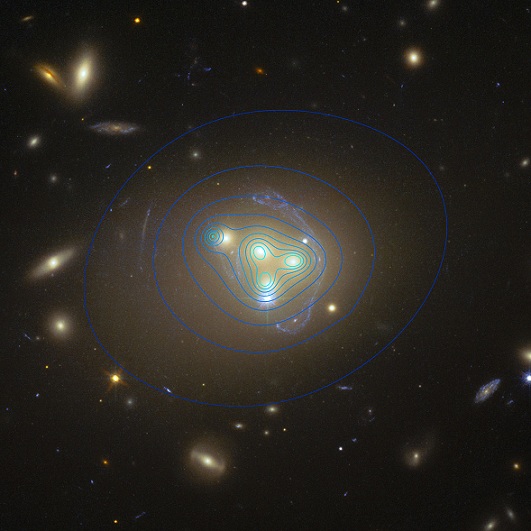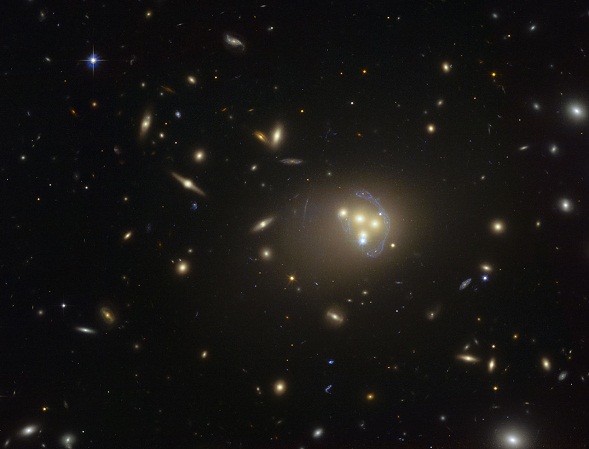| Online: | |
| Visits: | |
| Stories: |

| Story Views | |
| Now: | |
| Last Hour: | |
| Last 24 Hours: | |
| Total: | |
Potential Signs of ‘Interacting’ Dark Matter Suggest it is not Completely Dark After All (+Video)
Astronomers believe they might have observed the first potential signs of dark matter interacting with a force other than gravity.
An international team of scientists, led by researchers at Durham University, UK, made the discovery using the Hubble Space Telescope and the European Southern Observatory’s Very Large Telescope to view the simultaneous collision of four distant galaxies at the centre of a galaxy cluster 1.3 billion light years away from Earth.
Writing in the journal Monthly Notices of the Royal Astronomical Society today (Wednesday, April 15, 2015), the researchers said one dark matter clump appeared to be lagging behind the galaxy it surrounds.
They said the clump was currently offset from its galaxy by 5,000 light years (50,000 million million km) – a distance it would take NASA’s Voyager spacecraft 90 million years to travel.
Such an offset is predicted during collisions if dark matter interacts, even very slightly, with forces other than gravity.
Computer simulations show that the extra friction from the collision would make the dark matter slow down, and eventually lag behind.
Scientists believe that all galaxies exist inside clumps of dark matter – called “dark” because it is thought to interact only with gravity, therefore making it invisible.
Nobody knows what dark matter is, but it is believed to make up about 85 per cent of the Universe’s mass.
Read more at: http://phys.org/news/2015-04-potential-interacting-dark.html
Provided by Durham University https://www.dur.ac.uk/news/newsitem/?itemno=24341
First Signs of Self-interacting Dark Matter? http://www.eso.org/public/news/eso1514/

This image from the NASA/ESA Hubble Space Telescope shows the rich galaxy cluster Abell 3827. The strange pale blue structures surrounding the central galaxies are gravitationally lensed views of a much more distant galaxy behind the cluster.
The distribution of dark matter in the cluster is shown with blue contour lines. The dark matter clump for the galaxy at the left is significantly displaced from the position of the galaxy itself, possibly implying dark matter-dark matter interactions of an unknown nature are occuring.
Credit: ESO/R. Masse

This image from the NASA/ESA Hubble Space Telescope shows the rich galaxy cluster Abell 3827. The strange blue structures surrounding the central galaxies are gravitationally lensed views of a much more distant galaxy behind the cluster. Observations of the central four merging galaxies have provided hints that the dark matter around one of the galaxies is not moving with the galaxy itself, possibly implying dark matter-dark matter interactions of an unknown nature are occuring.
Images credit: ESO http://www.eso.org/public/news/eso1514/



